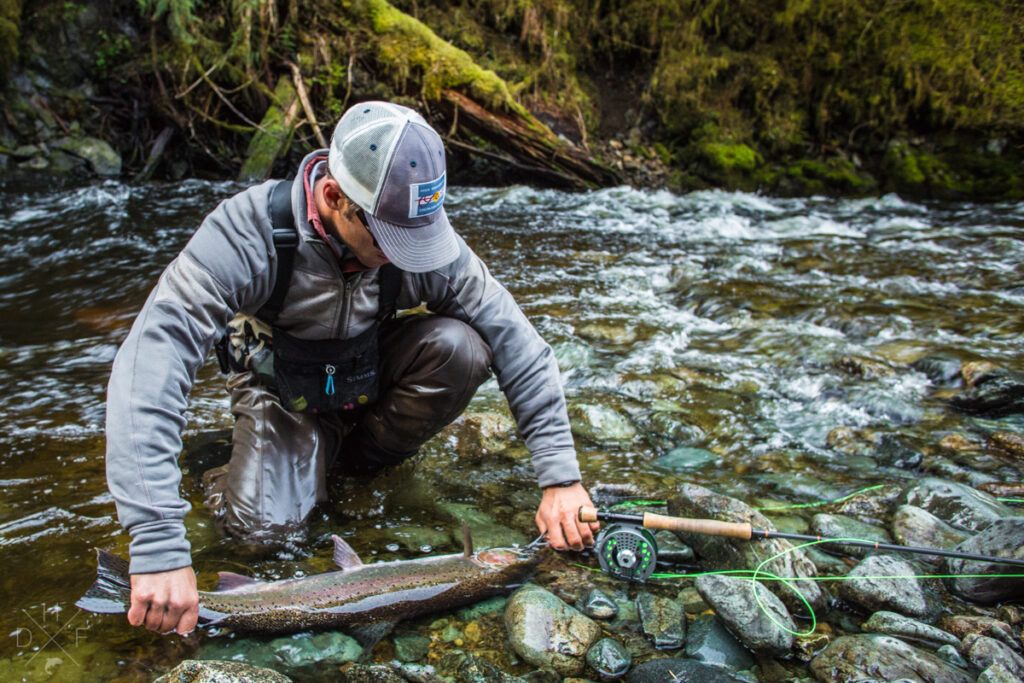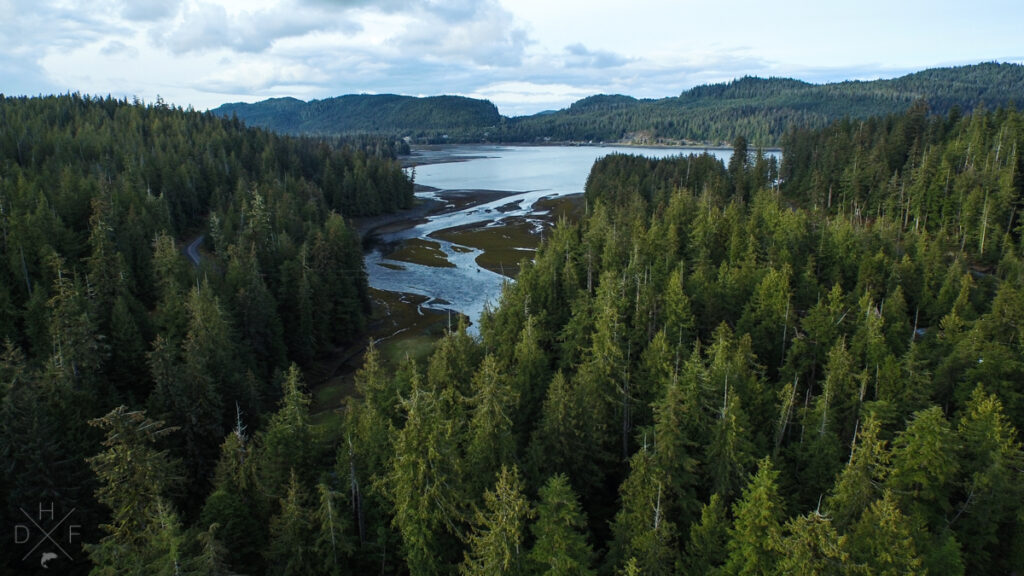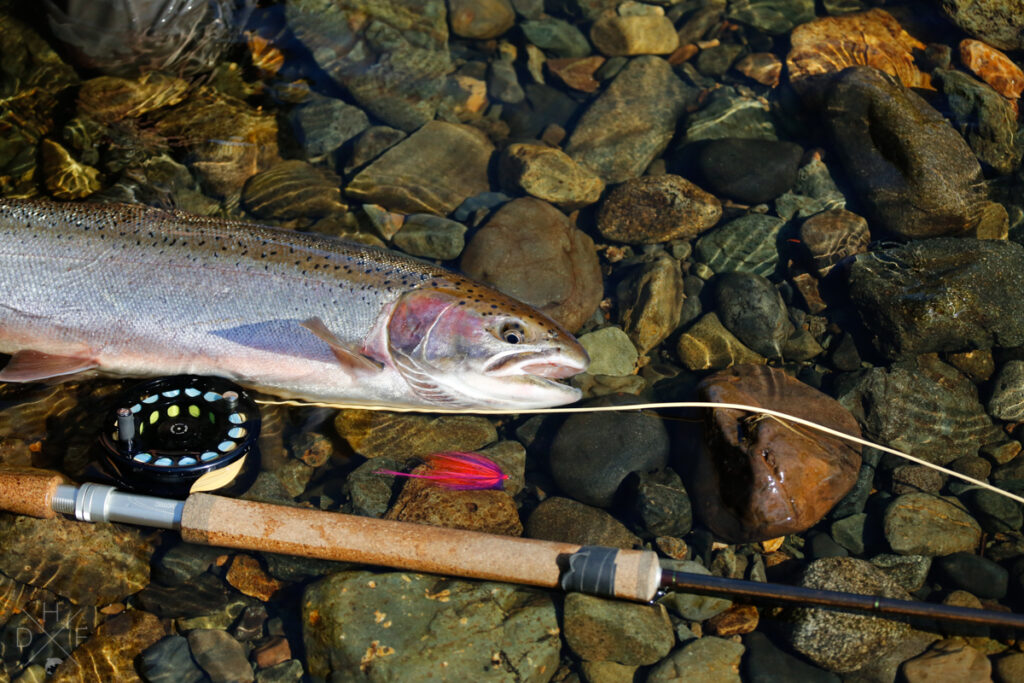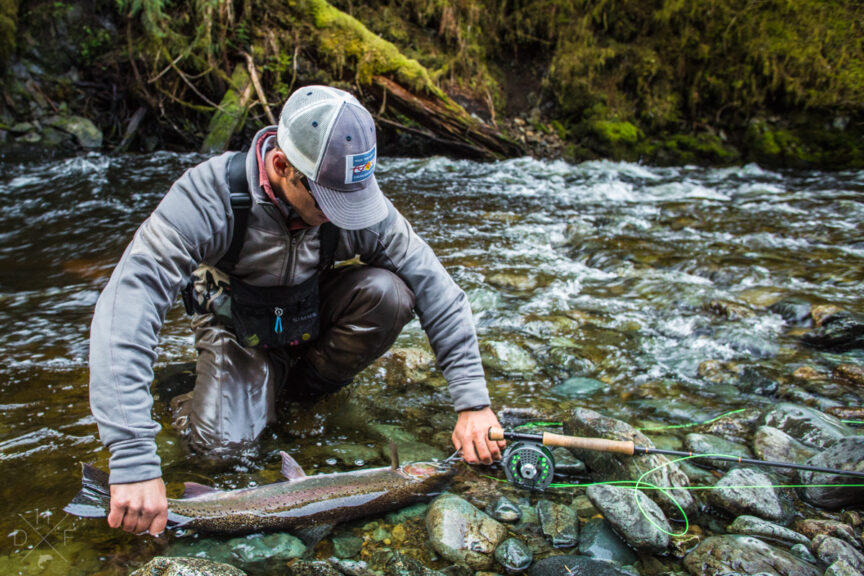
The U.S. Forest Service has proposed restoring protections for more than 9 million acres of roadless areas in southeast Alaska’s Tongass National Forest, reinstating the 2001 Roadless Rule after it was hastily repealed late last year against the wishes of 96% of all public comments. The Tongass has over 300 documented steelhead streams, including the famed Situk River, where over sixty percent of the steelhead in southeast Alaska are caught on average. This forest is one of the last places on the planet where wild steelhead still thrive.
The public has 60 days to provide comment on the proposal. If approved, the roadless rule will be reinstated on the Tongass, which is part of North America’s largest remaining intact temperate rainforest. The roadless rule was originally passed by the Forest Service in 2001 and prohibits commercial logging and new logging roads in 9.4 million acres of roadless areas on the Tongass.
Take Action now to restore roadless protections

Images: Lee Keupper
Safeguarding this habitat is a necessary step in preserving what is left of North America’s intact steelhead populations. The documented streams reflect only a portion of steelhead’s habitat in the Tongass; anecdotal data suggests that the true number of steelhead streams could be twice that.
Steelhead that return to undocumented streams do not receive any conservation measures under Alaska state law. Reinstating the Roadless Rule is crucial in protecting steelhead throughout the Tongass, in both documented and undocumented streams.
Trout Unlimited Alaska’s Fish Habitat Mapping Project works to expand fish habitat knowledge by documenting anadromous habitat use in freshwater bodies that are not currently listed in the state’s Anadromous Water’s Catalogue (AWC). Since its start in 2018, the Fish Habitat Mapping Project surveys have resulted in the addition of seven previously undocumented steelhead waters to the AWC, with two more nominations from the 2021 season pending.
The project still has a long way to go in documenting all steelhead streams on the Tongass. The Roadless Rule will provide a key layer of protection to fish in undocumented streams that wouldn’t be available otherwise.
The move to reinstate the rule reverses an October 2020 decision to exempt the Tongass from roadless area protections. The exemption opened previously protected lands containing rare, old-growth trees to industrial clear-cut logging and construction of expensive and highly-subsidized logging roads. The exemption was granted despite overwhelming public comment in support of the rule and its long-standing protections for fish and wildlife.
The Tongass is the largest national forest at nearly 17 million acres and is host to some of the most important fish and wildlife habitat on the planet. Large stands of ancient, towering trees surround 17,000 miles of clean, undammed creeks, rivers and lakes that support the region’s abundant salmon, steelhead and trout populations.
The forest also plays a crucial role in slowing the impact of climate change. Every 10 acres of mature and old-growth forest in the Tongass counterbalances the yearly carbon footprint of one American. Maintaining a healthy forest is vital for local fish and wildlife populations, as well as the greater health of the planet.
This comment period is the next step toward implementing the Forest Service’s new “Southeast Alaska Sustainability Strategy”. The strategy ends large scale, old-growth logging on the forest and will, instead, prioritize recreation, restoration and resiliency, and make significant new investments in projects that support sustainable economic growth and community health.

Image: Lee Keupper
The strategy is part of the Forest Service’s effort to align its forest management with the ecological and economic realities of the region. The Tongass produces more salmon than all other national forests combined and supports fishing and tourism industries that account for 26% of local jobs in the region. In contrast, logging supports fewer than 1% of local jobs while harming the fishing and tourism industries, costing taxpayers million annually, and supporting export markets instead of local demand.
This strategy recognizes the Tongass is most valuable for its wild steelhead and salmon, abundant wildlife, and scenic landscapes, and will support Southeast Alaska’s diversified economy and help conserve scarce forest resources.
Let the U.S. Forest Service know you agree and take action today.
Marian Giannulis is the Communications and Engagement Director for Trout Unlimited Alaska.


